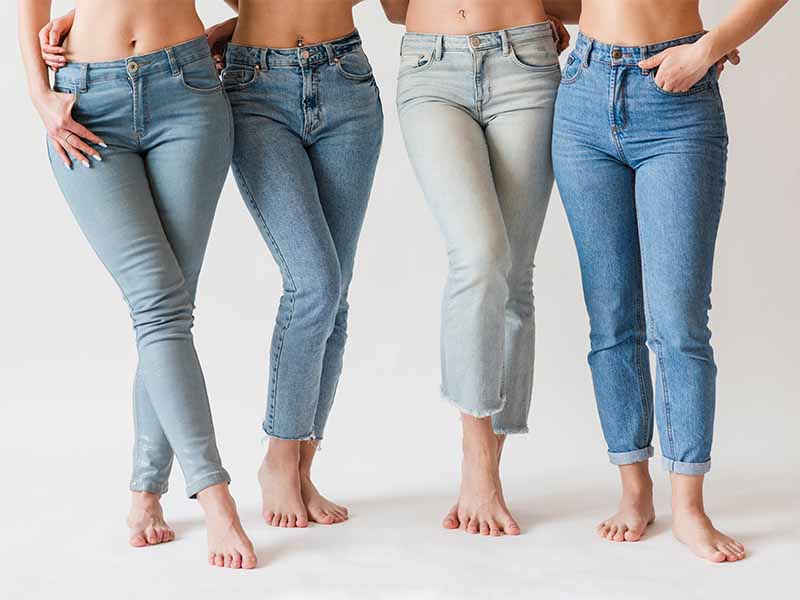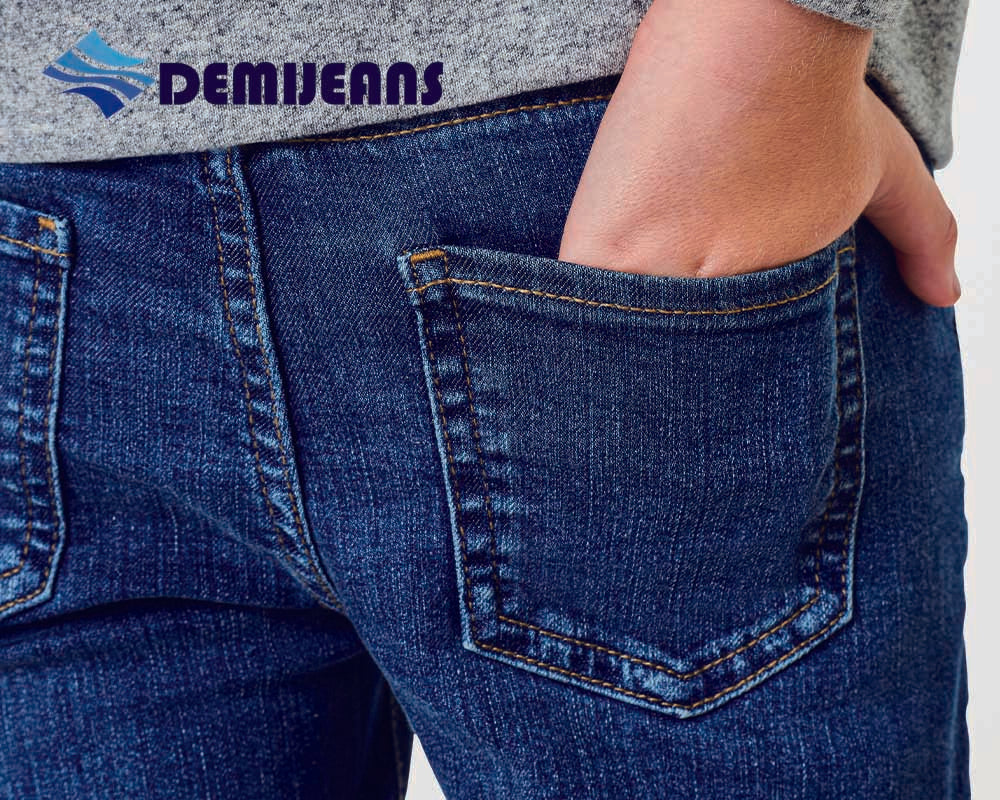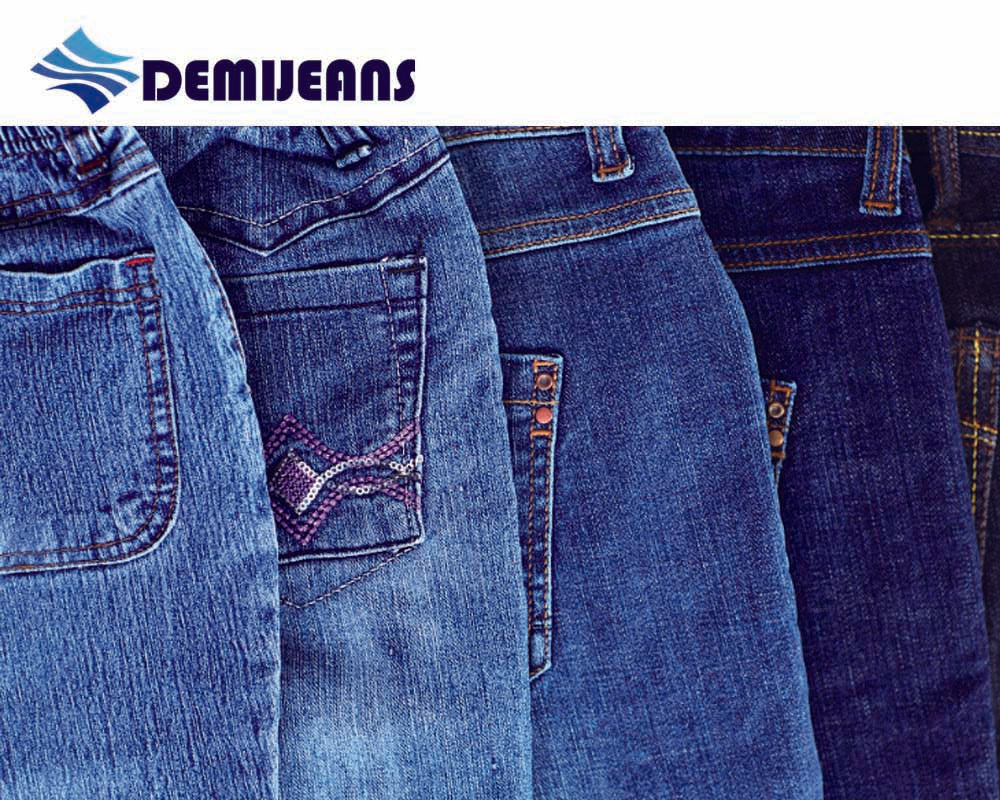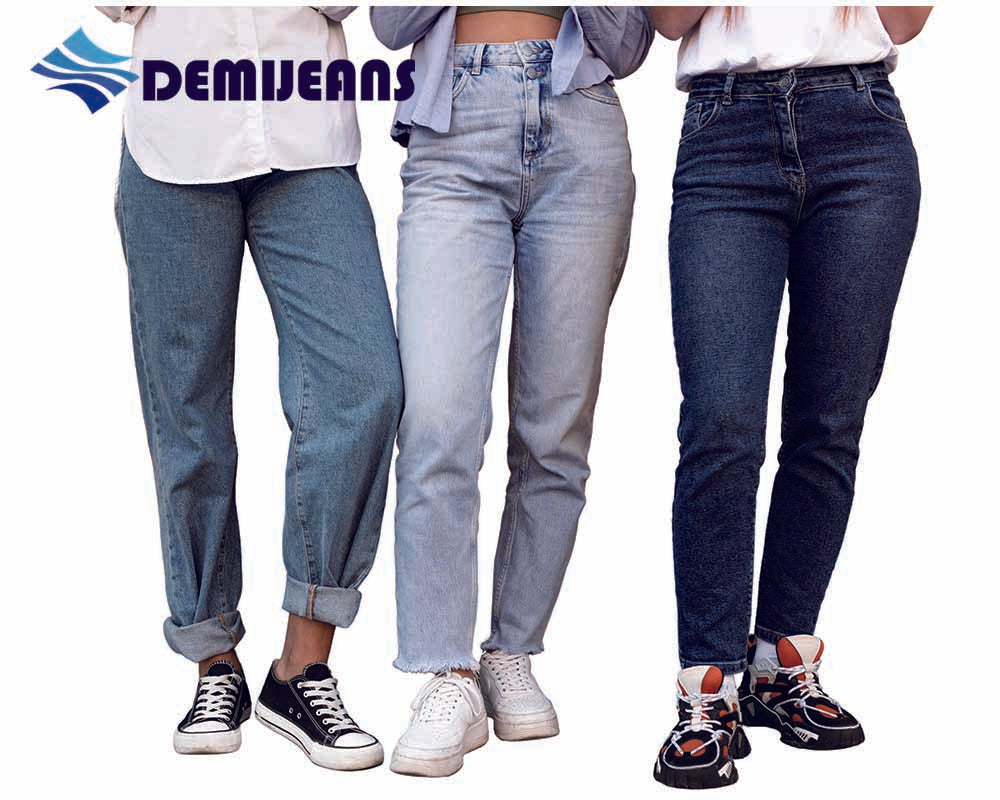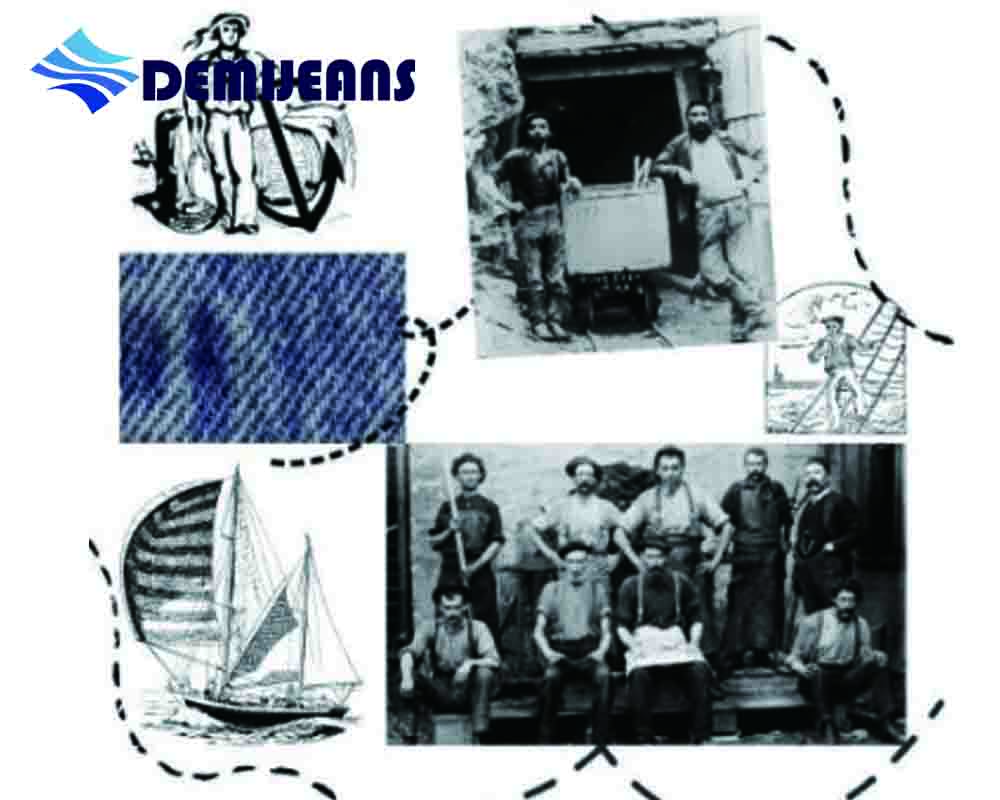Denim is a thicker yarn-dyed warp-faced twill cotton fabric. The warp yarns are dark in color, usually indigo blue, and the weft yarns are light in color, usually light gray or scoured white yarn. Also known as indigo labor cloth.
Denim originated in the American West and was named after local ranch workers who used it to make durable clothing. This kind of gray fabric has undergone special anti-shrinkage finishing, and its shrinkage rate is smaller than that of ordinary fabrics. Its texture is tight and thick, its color is bright, and its texture is clear. Due to its properties, denim is ideal for making men's and women's jeans, denim tops, denim vests, denim skirts and other garments.
The weaving process of denim includes organic weaving (woven), knitting, braiding and non-woven, and knitting can be divided into warp knitting and weft knitting. Today, we’ll break down how to simply differentiate between knitted denim and woven denim to better understand these two common types of denim.
02 .knit denim
There are obvious differences in the production processes of knit denim and woven denim. This different process will naturally lead to different characteristics and effects.
The knitting process involves bending yarn into loops in sequence, and then stringing these loops together to form a fabric. According to the different directions of loop knitting, knitted fabrics can be divided into weft knitted fabrics and warp knit denim jeans . Weft knit fabric means that the coils are knitted along the transverse direction of the fabric, while warp knitted fabric means that the coils are knitted along the longitudinal direction of the fabric. In knitting technology, loops are the basic unit of fabric.
Compared to woven denim, knitted denim has better softness and comfort because its fabric structure is looser and has better elasticity. Due to the knitting process, knitted denim can more flexibly use various types of fibers, such as cotton, polyester fiber, elastic fiber, etc., to meet the needs of different clothing. Therefore, knitted denim has more creative space and possibilities in fashion design.
Knitted denim feels softer than denim, is comfortable to wear, and has better elasticity. Since it is knitted and weft-knitted, the use of different functional fibers is a major advantage of knitted denim.
In addition to the regular cotton, cotton-polyester and cotton-polyester spandex, most knitted denim also has many other functional properties, making it more diverse and practical in fashion design.
First of all, knitted denim can have the function of absorbing sweat, which makes it very comfortable to wear in summer or sports occasions, keeping the body dry and comfortable.
Secondly, some knitted denim also has antibacterial and deodorizing properties, which can help prevent bacterial growth and keep clothing fresh and hygienic. In addition, knitted denim can also have anti-ultraviolet function, which can effectively block ultraviolet rays and protect the skin from ultraviolet damage.
In addition, some knitted denim also has thermal properties, allowing it to stay warm and comfortable when worn in winter or cold weather. In addition to the above functional properties, knit denim fabric can also be washed, faded or discolored to achieve different clothing styles and effects, increasing its flexibility and plasticity in fashion design.
03. Woven Fabric
The tatting process is to interweave two or more sets of yarns vertically through a shuttle machine to form a 90-degree interweaving of warp and weft to make fabric. In this process, yarns are classified into different types according to different directions. Vertical yarns are called warp yarns, and horizontal yarns are called weft yarns. The basic unit of a textile woven fabric consists of the interweaving points where warp and weft yarns intersect, which together form the structure of the fabric.
Woven fabrics generally has a stronger and more solid texture, making it stronger and more durable than knitted denim. Due to the nature of its fabric construction, woven denim is often better suited for classic jeans, denim tops, and other denim accessories that not only look stylish but are also able to withstand everyday wear and use.
Woven denim typically has a tight texture and a stiffer feel, making it less soft than knit denim. However, woven fabrics are known for their strong, stiff and abrasion-resistant properties. This characteristic makes woven denim widely used in clothing production, especially for the production of large quantities of clothing. Whether making traditional jeans, denim tops, or other denim accessories, woven denim offers long-lasting quality and a classic look.
There are significant differences in the manufacturing process between knit denim and , which results in a different look and feel. Knitted denim is made by bending yarn into loops and knit them either crosswise or lengthwise. This process gives knit denim fabric a soft feel and good elasticity, making it ideal for casual and comfortable wear. In contrast, woven geotextile fabric is made by interweaving warp and weft threads on a shuttle loom, and its production process is more complicated, so it has a stiffer texture and tight texture. Because of these differences, we need to choose the right fabric based on our clothing needs and preferences. If you're looking for softness and comfort, knitted denim may be more suitable; if you want a more durable, stiff look, woven denim may be a better choice.

